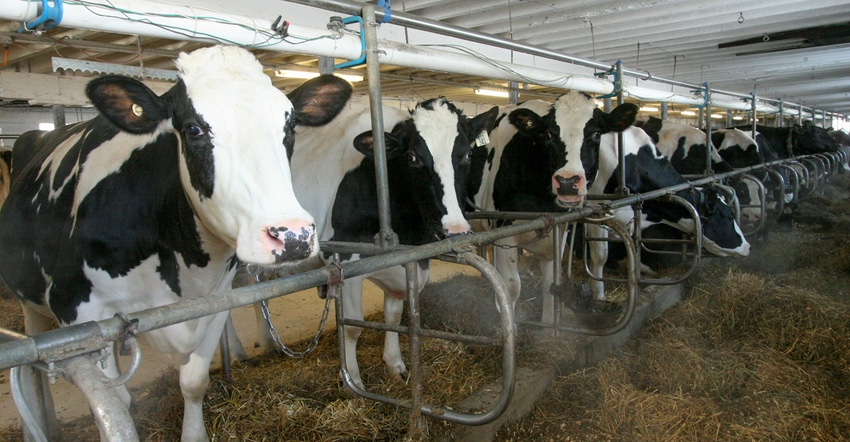
Milk prices hit bottom in April and are rising, according to Bob Cropp, University of Wisconsin Extension dairy economist. The Class III price was $16.33 in January and fell to $15.22 in April. The May Class III price was $15.57, and June could be near $16.40. For the first five months of the year, the Class III price averaged $2.52 higher than last year. Cropp says milk prices are expected to continue to increase and peak in October or November.
“Cheese prices have remained surprisingly strong considering the level of milk production, cheese production and higher stocks levels,” Cropp says.
For April cheddar cheese production was 4.8% higher than the year before, with total cheese production 3.7% higher. April 30 stocks of cheese were 10.1% higher than the year before. However, on the CME, cheese prices showed some weakness in recent trades. In May, 40-pound blocks averaged $2.27 per pound, started June at about $1.74 and were just under $1.60 by the end of June.
Cheddar barrels started June at $1.53 per pound and by the end of June were $1.35. The normal spread between blocks and barrels is around 4 cents, but it averaged 22 cents in June. This wide spread should correct itself as we move into summer, Cropp says.
Strong butter prices
CME butter averaged $2.27 per pound in May, and has ranged from $2.41 to $2.71 in June, with the price at $2.56 by the end of June. April butter production was 4.1% lower than a year ago, and April 30 stocks were 1.2% lower. The dry whey price has weakened slightly to around 46 cents per pound. Nonfat dry milk averaged 88 cents per pound in May and ranged from 90 to 94 cents in June. Cheese, butter, dry whey and nonfat dry milk prices are all expected to improve this summer and fall, which will push milk prices up.
Improved exports have supported higher cheese, butter, dry whey and nonfat dry milk prices.
“In April, U.S. dairy export volume was higher than year-ago levels for the 11th straight month. Compared to a year ago, exports to the top 10 markets were up 91% to China, 84% to Oceania, 69% to Japan, 59% to South Korea, 43% to South America, 23% to Southeast Asia, 9% to Mexico and 2% to Canada, but 3% lower to the Caribbean and 16% lower to the Middle East and North Africa,” Cropp says.
Dairy product prices on the Global Dairy Trade keep strengthening and making U.S. products more price-competitive, according to Cropp. Exports are expected to continue to show improvement. World demand is expected to be stronger, and increases in world milk production will be modest. Milk production had been running lower by major exporters — European Union, New Zealand, Australia and Argentina. Milk production may start to run above year-ago levels by summer and fall in both EU and New Zealand, but stronger world demand could absorb the increase.
Milk production and prices
The level of milk production will be a major factor in how much milk prices strengthen. “If the growth in milk production is 2% or less, along with favorable domestic sales and continued improved exports, the Class III price could be in the mid-$16s by July, assuming some recovery in cheese prices, and the $17s for the remainder of the year, peaking in October in the high $17s,” Cropp says.
USDA is forecasting 2017 milk production to be 2% higher than last year (2.3% leap-year adjusted), from 0.7% more milk cows and 1.3% more milk per cow (1.6% leap-year adjusted). However, the increase could well be less than 2%, supporting higher milk prices. Wet weather is impacting forage quality both in the Northeast and Midwest, which could negatively affect increases in milk per cow in these regions. Milk production does appear to be slowing. Compared to a year ago, April milk production was up 2.2%, but May production was up just 1.8%.
Milk cow numbers started to increase last October and continue to increase. May cow numbers were 0.8% higher than the previous year. Last year a relatively strong increase in milk per cow, up 1.4%, was a major factor in higher milk production. The increase in milk per cow may be slowing, with May up just 1%, Cropp notes.
About the Author(s)
You May Also Like






